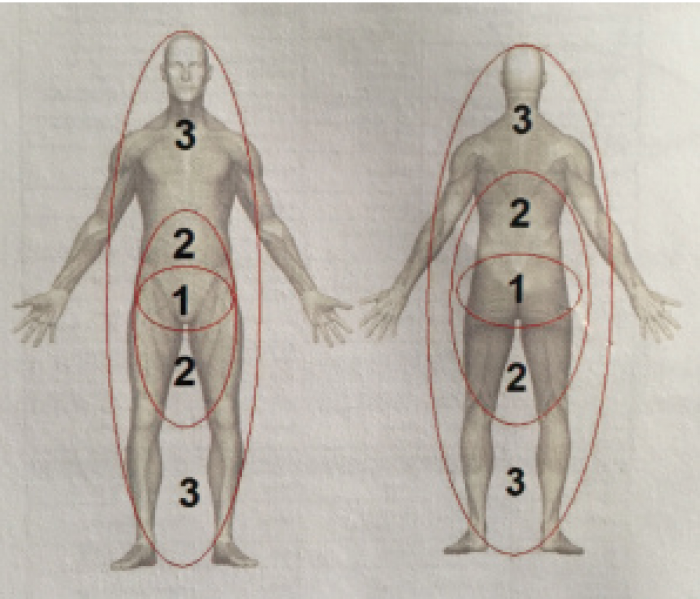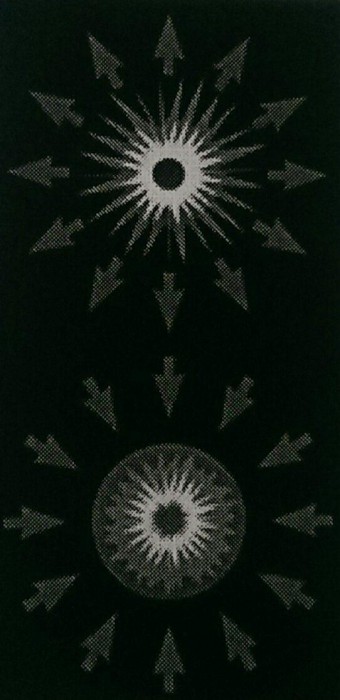
Muscle activation explained.....The theory and use of it in practice
Posted by Christie Rourke Over 1 Year Ago

Without breath and movement we would not survive. We cannot live without oxygen and it is used for repair, recovery, pain reduction, and all living cells! Without movement we cannot fetch food/water and would therefore also perish! If our hip flexors don't work we cannot move...just try standing on the spot and moving from that spot without bending at the hip at all! …...
It is not possible! Therefore, we want to achieve a state of 123, where each zone (as seen below in the diagram) works and fires correctly. If this is not happening, i.e. Zone 1 does not fire, then the body will develop a cheat pattern and use the other zones to effectively drive movement from the hip to allow us to “survive”!
These other zones working as hip flexors means that they cannot focus on the job that they are supposed to be doing, for example the quads may be providing hip flexion as a primary movement and therefore not functioning as a knee extensor which they are meant to. This will lead to the knee joint being vulnerable to injury and other muscles overworking to compensate and again, a spiral of over use injuries come about.
 We are all so used to living in a state of stress (our sympathetic response, where we are shut down, imploded and tight/sore/inefficient/unwell). Wouldn't it be great to be firing on all cylinders and working from a place of explosion.
We are all so used to living in a state of stress (our sympathetic response, where we are shut down, imploded and tight/sore/inefficient/unwell). Wouldn't it be great to be firing on all cylinders and working from a place of explosion.
A - B
A- EXPLOSION : A sudden increase in
volume and release of energy.
B- IMPLOSION : A process by which
objects are destroyed by
collapsing in on themselves.
Muscle Activation
This is the process by which each muscle is switched back on so that the primary functions can be met and the over compensating muscles can go back to their real job.
Neuromuscular reflex points are used and rubbed to bring about an immediate shift in the firing of the relevant muscle, and flexibility and strength will be improved as a result.
Breathing
Without using the diaphragm to breath the body quickly returns to old patterns/habits. The diaphragm is connected to the Psoas muscle (hip flexor) and therefore if we can get the diaphragm working it will improve Psoas function and prevent other zones having to take over.
This is why we teach to breath through the diaphragm. We are the only mammals who can breath independently of our movements yet we find most forms of exercise instruction teach us to hold breath, breath in or out on command or in sync with eccentric/concentric (down/up) phases of movement. Imagine getting 70% of your lungs oxygen during exercise? How this would affect your endurance, pain/lactic build up, recovery and repair process. Most of us use our ribs or chest to initiate/perform a “deep” breath, when in fact this is still only accessing that top part of the lungs and not the bottom (where the diaphragm is) in which 70% of our oxygen lies.
The only way to activate the parasympathetic response is through diaphragmatic breathing. We can use this to then interrupt the stress response (sympathetic response; Fight, flight or freeze) and to therefore calm the body and return it to the natural breathing state with which we were born to relieve physical, mental and emotional stress. (Babies and animals breath into their belly's).
When you get it right, what might you expect to feel?
You may find you feel dizzy or light-headed, this is just extra oxygen to the brain! The stomach can gurgle and this is blood returning to the digestive tract. When we are stressed there is lots of noise and chaos in the mind, when we tap into our parasympathetic state through breathing the mind can quiet. This is when we can be effective in all areas of life as you an be present! The more you can operate from this state in life the less stress their will be and the more connected you will be with your own life. Part of the stress response is that we go numb to protect ourselves, and this happens in all areas. Therefore there is a possibility of tasting your food better, smelling better, and generally being more aware of the world around you. Sleep will become deeper to a level where you can truly let go, rest; the way we're meant to.
What is in the mind is in the body, what is in the body is in the mind!
Try thinking of someone/thing that upsets, angers or frustrates you! Keep that in mind whist doing a squat for example. You might find you are hunched over, shut down, tight and imploded! Now, breath into the diaphragm, open up and think of someone/thing that inspires you and perform the squat again. Does it feel easier? If we take stress and pain/emotions into our bodies and try and perform exercise we are shutting down our bodies and then expecting them to perform in this closed state. If we remove the stress in our minds/bodies before exercise we can perform movement in an open and efficient manner and the 123 zone pattern can work and fire, preventing pain and injury.




